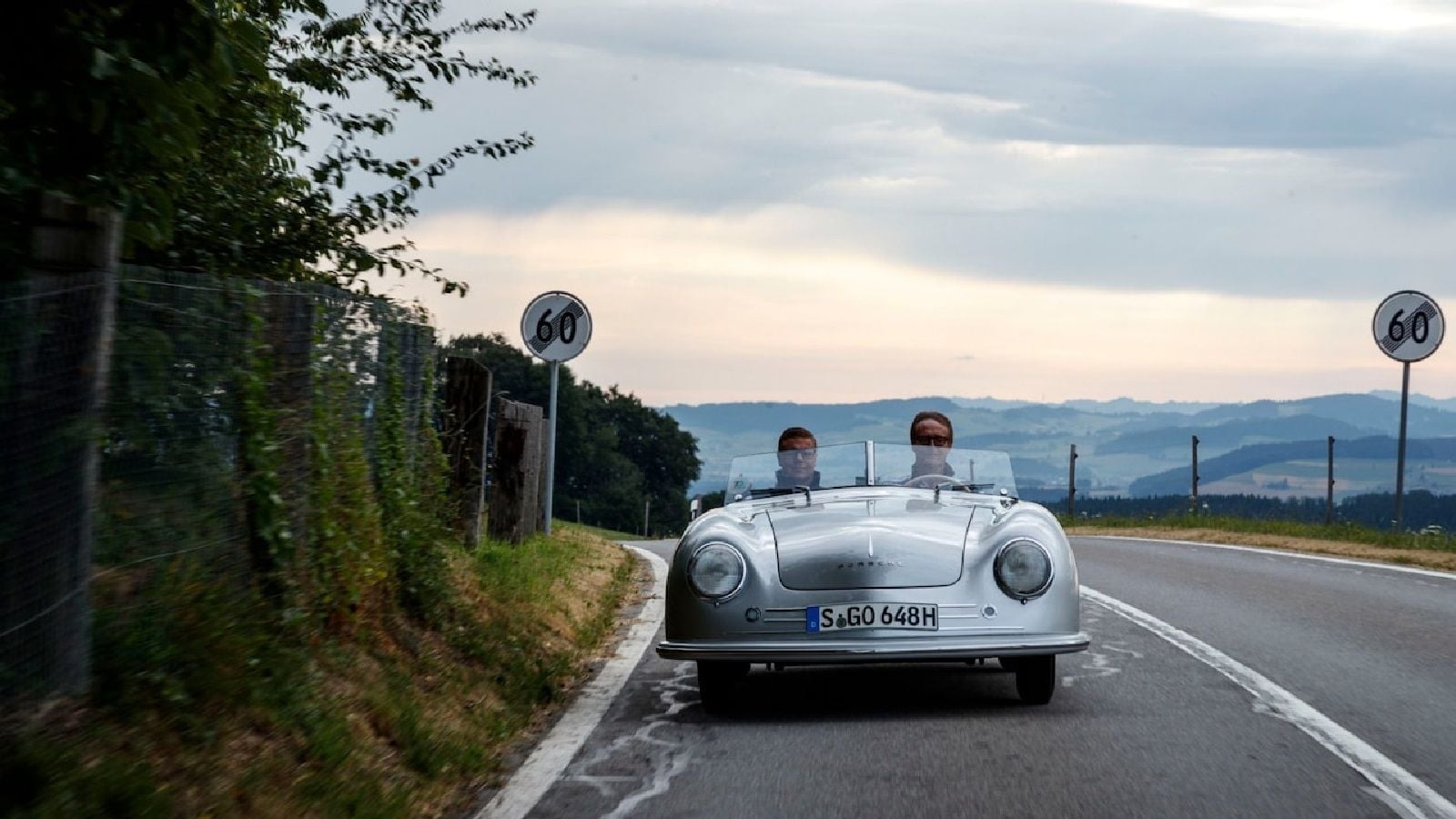Celebrating the Porsche that Started It All
Daily Slideshow: It's easy to get caught up in the 50+ year history of the 911, but Porsche's car-building story actually began with this 1948 356/1.












Number One
Although Porsche as a company is 87 years old, the German brand did not produce an automobile until 17 years into its existence. After the fallout of World War II, Ferdinand and Ferry Porsche began design of their first sports car that was to be somewhat of a modified sporty version of the VW Beetle. What came to be known as the 356 No. 1 turned out to be a radical departure from the Beetle despite using a number of similar components. But it proved to be extremely important in launching what is now the most popular sports car brand in the world. Fortunately for us, the Porsche museum brought out this lovely little piece of history at this year's Goodwood Festival of Speed.
Borrowing from the Beetle
It is believed that the VW Type 64 "record car" and the mysterious Type 114 V10 prototype were used as inspiration for the 356/1 as the smooth and streamlined body of the Porsche is strikingly similar to the sleek VW coupes. Ermen Komenda was commissioned to design the body and chassis, which he completed in only a few weeks. The body would fit over a tubular chassis that was reinforced with hefty bulkheads. It included a number of Beetle-derived parts including the flat-four cylinder air-cooled engine, 4-speed transmission, axles, steering setup, and brakes.
>>Join the conversation about the first Porsche ever right here in Rennlist.com!
Stuck in the Middle
What is interesting is that the Porsche went with a mid-engine configuration that essentially reversed the Beetle's trailing arm suspension setup and placed the transmission at the rear of the car. Unfortunately, this resulted in wild handling characteristics that would cause the rear wheels to toe out during cornering and greatly induce oversteer. Similarly, this leading arm design allowed the torque reaction of the rear brakes during application to lift the rear of the car. Needless to say, drivers would have their hands full in the corners with the tail-happy speedster.
>>Join the conversation about the first Porsche ever right here in Rennlist.com!
Porsche Performance
The engine is simply a Beetle four-cylinder unit that Porsche hopped-up to increase horsepower by nearly 40 percent. The engine displacement is 1,136cc (75mm x 64mm bore and stroke) and a set of carburetors fuel each bank for a total of 35 horsepower at 4,000rpm. The transmission requires double-clutching in first and second gears as it is not fitted with synchronizers, and fourth gear proves to be incredibly tall to achieve its top speed. At a curb weight of 585kg (1290 pounds), the 356/1 does 0-62mph in a lengthy 23 seconds and has a top speed of only 84 mph, but history shows that Porsche was quite pleased with the overall performance at the time.
>>Join the conversation about the first Porsche ever right here in Rennlist.com!
Confined Cabin
Unlike the subsequent 356 production cars, the 356/1 was solely a two-seater. Interior space is at a premium as the wide sills allow for a minimal seating area. Similarly, the mid-engine design limits the amount of space front to back. The dash and instrumentation are quite simple with a speedometer (with oil pressure and charging warning lights) in front of the driver and a clock on the passenger side. The view out the front of the car is fantastic as the driver can clearly see over the front of the car through the frameless glass windshield.
>>Join the conversation about the first Porsche ever right here in Rennlist.com!
A Learning Experience
Ferry Porsche had been quoted saying that the 356/1 was made simply to gain experience in how much they could reduce the vehicle weight while also using as many VW parts as possible. Alexander Klein (manager of Porsche historic vehicle collection) also explains how the mid-engine design placed too many limitations on the car such as the interior space, ergonomics, and engine cooling. In some respects, Porsche realized what they did not want in their production vehicle by experimenting in this car. Ultimately, the 356 evolved into a rear-engine car with a proven rear suspension design and a two-plus-two layout. Years later, Porsche was able to reacquire the 356/1 in 1958 after it had been passed around by several different owners. The car is now a staple of the Porsche Museum.
>>Join the conversation about the first Porsche ever right here in Rennlist.com!
For help with your maintenance and repair projects, please visit our How-to section in the forum.
